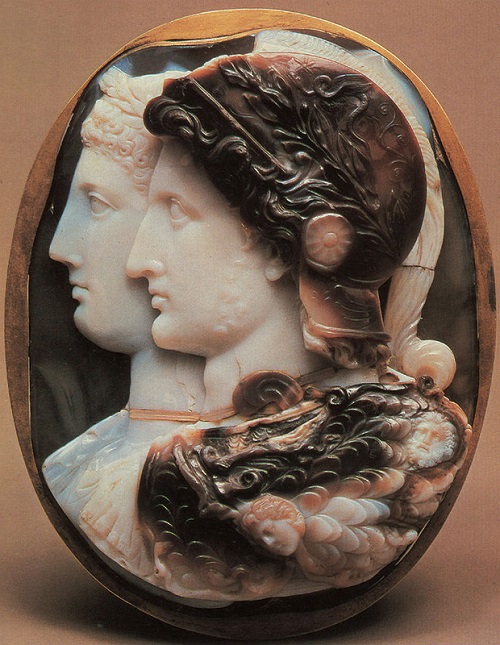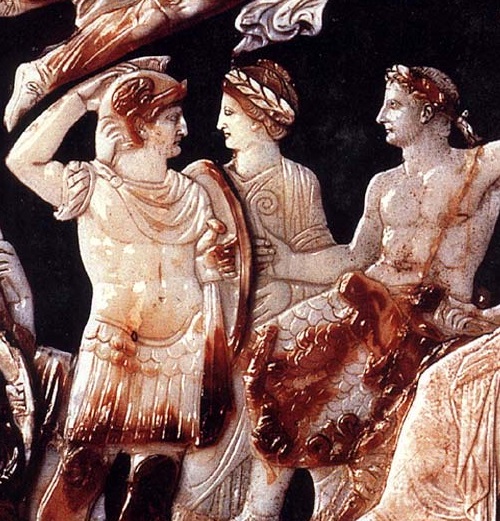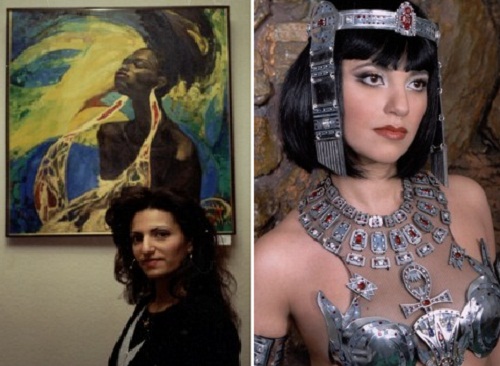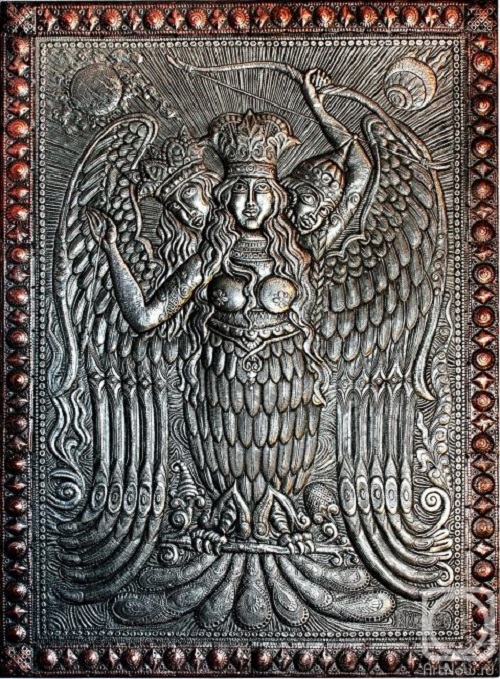Ancient arts of Glyptics
Ancient arts of Glyptics. The Hermitage has the most perfect, according to critics, the product of stone carvings of ancient times – it is a historical cameo “Gonzaga Cameo”. This is one of the biggest gems. Its length is 15.7 cm, width 11.8 cm, height 3 cm. A relief cut from the magnificent three-layered onyx – upper and lower layer of dark brown, medium – milky white. Unlike most gems Gonzaga cameo has two profiles – male and female. Foreground shows an excellent profile of the king, on the second – the queen. Queen face is darker in color and expression differs from the face of the king. Some scientists suggest that carved busts belong to Alexander the Great and his mother Olympia. Stone of rare beauty, solemnly high artistic manner of execution and interpretation of the heroic images – all this makes “Gonzaga Cameo” one of the most outstanding monuments of ancient art.
After the defeat in the war with Russia, and after the occupation of Paris in March 1814 Emperor Alexander I often visited Josephine. He kept for her and her children a large fortune. In gratitude, Josephine gave Russian Emperor Gonzaga cameo and asked him for permission to accompany Napoleon I on the island of Elba. Alexander I received a gift, but denied the request, and the famous cameo was brought to St. Petersburg, to the Hermitage.
The world’s largest cameo (cameo Tiberius) is stored in the Cabinet of medals in Paris. It is made of onyx plate size 31 x 26 cm and it is really much larger than any other known cameos. On it with a jeweler’s precision cut more than twenty figures, arranged in three horizontal layers.
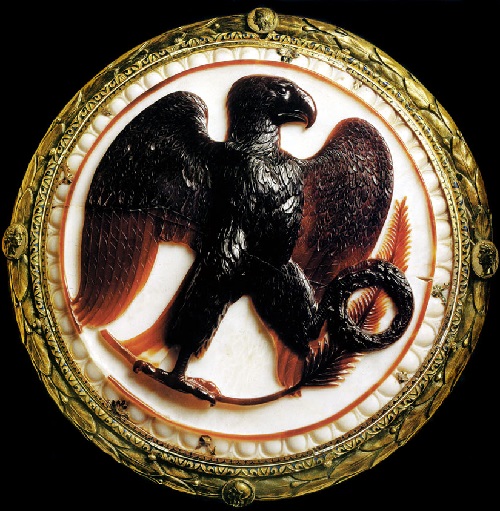
Cameo with an eagle. Dual Layer onyx. Roman work , 27 BC. e. Frame – gold plated silver. Diameter 22 cm. Vienna, Kunsthistorisches Museum, Antique collection
Eagle, symbol of the power of the Roman Empire, standing with outstretched wings on a palm branch. In the raised left paw claws compress oak wreath. Eagle carved on a dark layer of stone to give it a natural color.
Glyptic (from the Greek Glypho – cut out, hollow out) – the art of carving on the base and precious, semiprecious stones, shells, very elegant and beautiful, known since antiquity. Glyptic work distinguishes intaglio gems with embedded images, and cameo – bas-relief images of convex. Art of stone carving known since antiquity. In Mesopotamia gems were used in IV millennium BC. Especially popular gems were in Ancient Greece (VI century BC.) and Ancient Rome. In the Middle Ages, gems used to decorate the church utensils, books, vestments for priests. Antique gems were worn as fasteners on clothing, as framed medallions of precious metals, as stamps, amulets.
In the manufacture of gems were used different materials. Typically, for the lower layers of cameos was taken a darker material to its background, and the carving of stone was lighter. Often used sardonyx having layers of different colors. Also used in the production of gems agate, hematite, garnets, carnelian.
Ancient arts of Glyptics

August and Triton team, after 27 AD , A collection of classical antiquities Vienna, golden framing XVII century
zamok.druzya.org (forum)
